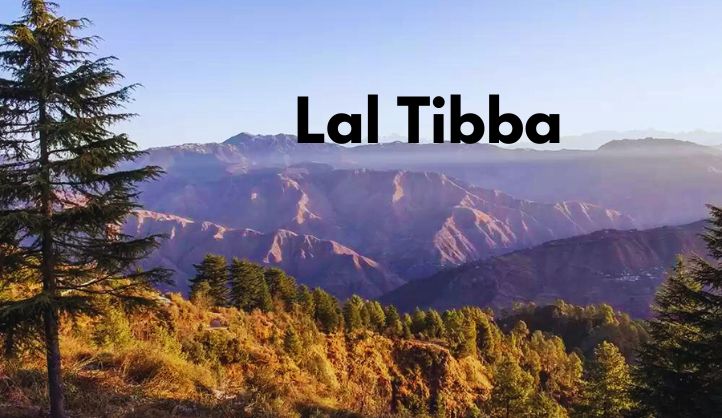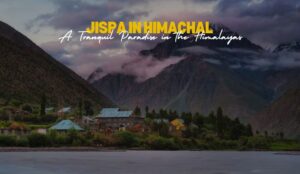Nestled in the serene and verdant hills of Mussoorie, Lal Tibba stands as a testament to nature’s unparalleled beauty and historical significance. Known as the highest point in Mussoorie, Lal Tibba offers panoramic views, a tranquil environment, and a glimpse into the past. This article delves into the myriad facets of Lal Tibba, exploring its natural allure, historical relevance, and the experiences it offers to visitors.
A Glimpse into the Past
Lal Tibba, which translates to “Red Hill,” is steeped in history. The name itself is derived from the red hue of the sunrise and sunset that bathe the hill in a warm, crimson glow. This vantage point has been a silent witness to the colonial era, with British settlers often frequenting the spot for its breathtaking views and pleasant climate. The area around Lal Tibba still retains some of its colonial charm, with quaint cottages and old buildings that tell tales of a bygone era.
Natural Beauty and Scenic Views
The primary allure of Lal Tibba lies in its unparalleled natural beauty. Standing at an elevation of 2,275 meters (7,464 feet), it offers sweeping views of the surrounding mountains, valleys, and distant peaks. On clear days, one can see the majestic peaks of Kedarnath, Badrinath, and other prominent mountains of the Himalayan range. The view is especially mesmerizing during sunrise and sunset, when the sky is painted in hues of orange, pink, and red, casting a magical glow over the landscape.
The Char Dukan Area
Just a short walk from Lal Tibba is the famous Char Dukan area, named after the four historic shops that have been serving visitors for decades. This quaint area is a favorite spot for both locals and tourists, offering delicious snacks, hot beverages, and a cozy ambiance. The shops here are known for their classic offerings like pancakes, waffles, and the ever-popular masala chai. The rustic charm of Char Dukan, combined with the stunning views of Lal Tibba, makes it a perfect spot to relax and soak in the beauty of Mussoorie.
The Landour Signal Station
One of the significant landmarks near Lal Tibba is the Landour Signal Station. This station, operated by the Indian Army, is an important communication post. Though access to the station itself is restricted, the area around it provides some of the best vantage points for viewing the Himalayan peaks. Telescopes are available for tourists to get a closer look at the distant mountains, adding to the appeal of Lal Tibba as a prime destination for nature lovers and photography enthusiasts.
Flora and Fauna
Lal Tibba is not just about stunning vistas; it is also a haven for nature enthusiasts. The dense forests surrounding the area are home to a rich variety of flora and fauna. Tall deodar, pine, and oak trees dominate the landscape, creating a lush green canopy that is a sight to behold. The area is also a bird-watcher’s paradise, with numerous species of birds, including the Himalayan bulbul, the red-billed blue magpie, and various species of woodpeckers, making it their home. The tranquil environment, coupled with the chirping of birds and the rustling of leaves, provides a soothing escape from the hustle and bustle of city life.
Trekking and Hiking
For adventure seekers, Lal Tibba offers several trekking and hiking opportunities. The trails around Lal Tibba are relatively easy and suitable for beginners, making it a popular choice for families and casual trekkers. The scenic trails meander through dense forests, offering glimpses of the rich biodiversity of the region. The fresh mountain air, the sound of birds, and the breathtaking views make trekking in Lal Tibba a rejuvenating experience.
Photography Paradise
Lal Tibba is a dream destination for photographers. The ever-changing play of light and shadow, the panoramic views, and the vibrant hues of sunrise and sunset provide endless opportunities for capturing stunning photographs. Whether it’s landscape photography, bird photography, or capturing the charm of the old colonial buildings, Lal Tibba offers something for every photography enthusiast. The telescopes available at various points also allow for detailed shots of the distant Himalayan peaks, adding to the allure for photographers.
Best Time to Visit
The best time to visit Lal Tibba is during March to June and September to November. During these periods, the weather is pleasant, and the skies are clear, offering the best views of the mountains and the surrounding landscape. The monsoon months (July and August) bring heavy rainfall, which can obstruct the views and make trekking difficult. Winter (December to February) sees snowfall, which transforms Lal Tibba into a winter wonderland, but the cold temperatures can be a deterrent for some visitors.
Accommodations and Facilities
While Lal Tibba itself does not have accommodation facilities, there are several options available in the nearby areas of Landour and Mussoorie. From luxury resorts to budget guesthouses, visitors can find a range of accommodations to suit their preferences and budget. Staying in these areas provides easy access to Lal Tibba and other attractions in Mussoorie, making it convenient for tourists.
Nearby Attractions
Gun Hill
Gun Hill, the second highest point in Mussoorie, offers spectacular views of the Doon Valley and the Himalayan ranges. It is accessible via a cable car ride from Mall Road, which is an exciting experience in itself. The hill is named for the cannon that used to be fired here every afternoon to announce the time, a practice dating back to the colonial era. Today, visitors can enjoy the panoramic views and various small stalls offering local snacks and souvenirs.
Kempty Falls
Kempty Falls is one of the most popular tourist attractions in Mussoorie. These magnificent waterfalls cascade down from a height of 40 feet, creating a stunning natural pool at the base. Visitors can enjoy a refreshing dip in the cool waters or simply relax by the falls, taking in the beauty of the surroundings. The area around Kempty Falls has several shops and eateries, making it a perfect spot for a day trip.
Cloud’s End
Cloud’s End marks the geographical end of Mussoorie and is surrounded by thick forests of oak and deodar. The road leading to Cloud’s End offers breathtaking views and is a haven for nature lovers. The estate here dates back to 1838 and provides a glimpse into the colonial past. The area is perfect for a peaceful retreat, with opportunities for hiking and wildlife spotting..
Landour
Landour, a quaint cantonment town near Mussoorie, is known for its serene environment and colonial charm. The area is home to several historic buildings, churches, and schools. The scenic beauty of Landour, with its winding roads and dense forests, makes it a perfect place for a leisurely stroll. Landour Bakehouse, known for its delicious baked goods, is a must-visit spot here.
Jharipani Falls
Jharipani Falls is a beautiful waterfall located on the outskirts of Mussoorie. The trek to the falls is relatively easy and offers stunning views of the surrounding hills and valleys. The area around the falls is perfect for picnics and spending some quiet time in nature. The sound of the cascading water and the lush greenery make Jharipani Falls a serene escape from the town’s hustle and bustle.
Bhatta Falls
Bhatta Falls is another picturesque waterfall near Mussoorie, less crowded than Kempty Falls. The falls are accessible via a short trek, making it an adventurous outing. The clear water, natural pools, and tranquil surroundings make Bhatta Falls an ideal spot for picnics and swimming. The area is relatively undeveloped, providing a more natural and less commercialized experience.
Tips for Visitors
- Early Arrival: To fully enjoy the beauty of Lal Tibba, it is recommended to arrive early in the morning. The early hours offer the best light for photography and a peaceful environment before the area gets crowded with tourists.
- Carry Warm Clothes: Even during the summer months, the weather in Lal Tibba can be quite chilly, especially in the early morning and late evening. It is advisable to carry warm clothes to stay comfortable.
- Respect Nature: Lal Tibba is a pristine natural spot, and it is important to maintain its beauty by not littering and respecting the local flora and fauna.
- Stay Hydrated: Carrying water and some snacks is a good idea, especially if you plan to spend a considerable amount of time exploring the area.
- Camera Ready: Don’t forget to carry your camera or smartphone to capture the stunning views and memorable moments.
Conclusion
Lal Tibba is a jewel in the crown of Mussoorie, offering a perfect blend of natural beauty, historical significance, and tranquility. Whether you are a nature lover, a history enthusiast, or simply looking for a peaceful escape, Lal Tibba has something to offer. The panoramic views of the Himalayas, the charming colonial-era buildings, and the serene environment make it a must-visit destination for anyone traveling to Mussoorie. As you stand atop Lal Tibba, gazing at the distant peaks and the lush valleys below, you can’t help but feel a sense of awe and wonder at the beauty of nature.
FAQ about Lal Tibba
1. What is Lal Tibba?
Lal Tibba, which means “Red Hill,” is the highest point in Mussoorie, Uttarakhand. It offers stunning panoramic views of the Himalayan range and the surrounding valleys, making it a popular spot for nature lovers and photographers.
2. Can I do trekking or hiking at Lal Tibba?
Yes, Lal Tibba offers several trekking and hiking opportunities. The trails around Lal Tibba are relatively easy and suitable for beginners, making it a popular choice for families and casual trekkers. The scenic trails meander through dense forests, offering glimpses of the rich biodiversity of the region.
3. How can I reach Lal Tibba?
Lal Tibba can be reached by hiring a taxi or taking a local bus from Mussoorie. For those who enjoy walking, a leisurely hike from the town to Lal Tibba is also a great option. The road to Lal Tibba is well-maintained, making the journey comfortable and enjoyable.
4. What can I see from Lal Tibba?
From Lal Tibba, you can enjoy breathtaking views of the Himalayan peaks, including Kedarnath, Badrinath, and other prominent mountains. The area also offers views of the Doon Valley and the surrounding landscapes. Telescopes are available for a closer look at the distant peaks.
5. When is the best time to visit Lal Tibba?
The best time to visit Lal Tibba is during the months of March to June and September to November. During these periods, the weather is pleasant, and the skies are clear, offering the best views of the mountains and the surrounding landscape. The monsoon months (July and August) bring heavy rainfall, and winter (December to February) sees snowfall, which can obstruct views and make trekking difficult.





